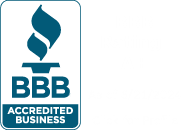501(c)(6) ORGANIZATIONS
A nonprofit business organization sounds like a paradox, but that’s exactly what a 501(c)(6) nonprofit is. If you have a league that exists to make conditions better in at least one line of business, your institution might qualify to be a 501(c)(6) organization. And if you need help growing your nonprofit business organization, you’ve come to the right place.
There is a wide range of what types of business leagues fall under the 501(c)(6) nonprofit umbrella, and they’re also all allowed to directly participate in politics, so this is a great option to do good for people in commerce on a wide scale.
What Is a 501(c)(6) Organization?
The 501(c)(6) requirements of the Internal Revenue Code cover business leagues, boards of trade such as real estate boards, professional football leagues, and chambers of commerce. Any of these can fit the 501(c)(6) organization structure as long as they operate as a nonprofit with earnings not benefitting an individual member.
A “business league” is defined as a company of people who have a common business interest and whose purpose is to promote that interest without engaging in a regular for-profit business. This includes trade associations and professional associations.
Examples of a 501(c)(6) nonprofit include the United States Chamber of Commerce, the Beer Institute, and the Professional Women’s Hockey Players Association.


How to Create a 501(c)6 Organization
Establishing a 501(c)(6) nonprofit is very similar to creating any organization in the 501(c) category.
- Determine your business league’s purpose.
- Recruit members who are aligned with your organization’s purpose.
- Establish a board of directors that can actively contribute to your business league’s mission.
- Complete IRS Form SS-4 and submit for federal approval.
- For each state you plan to operate in, complete and submit the required Articles of Incorporation.
- Complete and submit Federal IRS Form 1024 to request tax-exempt status.
- Once the IRS issues their Determination Letter, you’re almost ready to launch!
- With your federal Determination Letter, contact the Department of Revenue for each state and municipality you plan to operate in for location-specific regulations.
Are donations to a 501(c)(6) organization tax-deductible?
Unlike donations made to 501(c)(3) organizations, the unique 501(c)(6) requirements that apply to business leagues mean that donations are not considered tax-deductible. However, because the 501(c)(6) organization structure is aligned to create a robust, membership-driven enterprise, the membership fees and any gifts offered by participating businesses are typically tax-deductible as a necessary expense of conducting business. When creating a 501(c)(6) nonprofit, the most important aspect to remember is that the business league is depending on collecting membership dues. Therefore, creating members-only benefits, incentives, and building cause awareness is essential for establishing the league and growing it over time.

501(c)(6) Requirements
A 501(c)(6) organization can promote its industry’s products, but it cannot advertise for a specific member. For instance, the California Milk Processor Board has 501(c)(6) nonprofit status and was perfectly within their rights to launch their famous “Got Milk?” campaign. But they would not have been allowed to promote just one farm’s dairy.
Like 501(c)(4)s and 501(c)(5)s, a 501(c)(6) can engage in lobbying for legislation that aids its mission as much as they’d like. And unlike a 501(c)(3), they can also directly support or oppose candidates for political office. However, the latter cannot compromise the majority of their activities; no more than 49% of their resources can go towards it.
Your Growth Partner for 501(c)(6) Nonprofit Operations Management
If you’d like to promote a line of business yourself with a 501(c)(6) organization, you’ll have to file a Form 1024 with the IRS, and in each subsequent year, submit a Form 990. Be sure to fill out each form as completely as you can and attach all necessary documents as the IRS can reject the form and revoke tax-exempt status.
Instead of trying to figure it out yourself, get help from the professionals at BryteBridge Nonprofit Solutions. We don’t just teach you what to do, we help you do it as well, so you can feel confident that these all-important forms are getting done correctly every time. That’s why over 30,000 people have trusted us for help with their nonprofit operations and their growth.
Let us help you help others. Contact us today to schedule a consultation.


